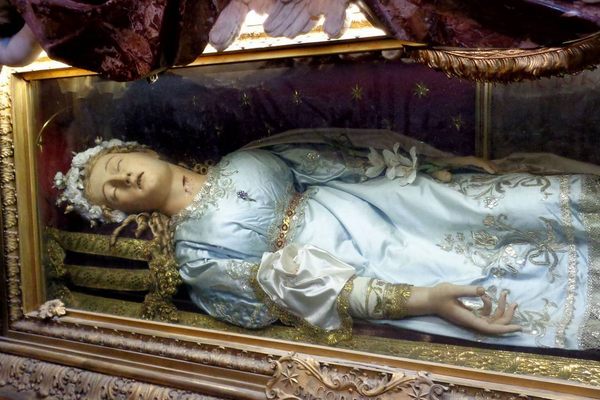About
The ribs dangling within this medieval church are no ordinary bones. According to legend, they once belonged to a fierce dragon who was killed by a saint.
The Basilica of Santa Maria e San Donato dates to the seventh century, back when the islands comprising the Venetian archipelago were a loose association communities seeking refuge from Germanic invasions. The church's original dedication was only to Santa Maria—"e San Donato” (“and St. Donatus”) was added in 1125 after the remains of the saint and the dragon he killed were stolen from Cephalonia by Venetian Doge Domenico Michiel.
The provenance of the beastly bones prior to the 12th century is lost to history. What is known starts in the 1120s, when Doge Michiel sailed out on a crusade to the Holy Land to assist the beleaguered King of Jerusalem, Baldwin II. Venice's main objective was to smash the Fatimid Egyptian blockade of the eastern Mediterranean, but seeing that the Byzantines had recently gotten on Venice's nerves by canceling a valuable trade agreement, Doge Michiel took his time looting Byzantine Greece on his way to meet Baldwin. Among the resulting plunder were the remains of St. Donatus, along with the bones of the dragon.
Though St. Donatus may have existed, the details of his life story are completely legendary. He was supposedly a childhood friend of Julian the Apostate, the last pagan emperor. As the story goes, Julian is eventually responsible for the execution of St. Donatus. But before his death, Donatus is said to have performed many miracles. According to the lore, he raised a woman from the dead, exorcized a demon from a young boy, restored sight to a blind woman, and finally slew the dragon, after it had allegedly poisoned a well in Epirus.
The “dragon bones”—which are likely the bones of a large mammal—now hang behind the altar, accessible but mostly out of sight to anyone who's not looking for them. None of the informational markers in the church mention the bones. Instead, they point to the church's other notable treasures, like its two-story brick Byzantine exterior, the 11th-century gold mosaic of the Virgin Mary in the apse, and the vibrant animal floor mosaics (notably one showing two chickens carrying a tied fox) dating to the following century.
Update as of June 2022: Restoration work is currently underway.
Related Tags
Know Before You Go
The church is open for visiting from 9 a.m. to 6 p.m, free of charge. Monday through Saturday and from 12:30 p.m. to 6 p.m. on Sundays and holidays. As of 2022, the area behind the alter is currently under renovation and the bones are obscured by the scaffolding, but the rest of the church are certainly worth the visit.
Flavors of Italy: Roman Carbonara, Florentine Steak & Venetian Cocktails
Savor local cuisine across Rome, Florence & Venice.
Book NowCommunity Contributors
Added By
Published
January 18, 2019



























































